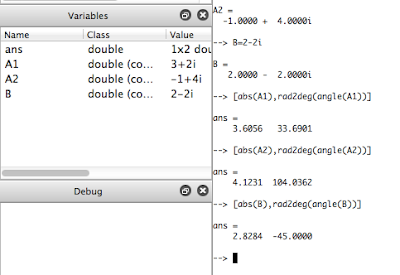Purpose
This lab has been broken into two parts. The purpose of the first part is to investigate a real-world inductor which is equivalent to connect with RL and L in series, so the impedance ZL can be determined as ZL = RL + jwl and determine the inductance by looking for the ratio of magnitude of the terminal voltage and current phasors by following circuit.
Figure 1. Designed Circuit to Determine L in Part 1.
For second part of this lab, we want to find out at which frequency will the impedance become pure resistive by connecting to the circuit with a capacitor, in other words, the current is at maximin value, and we use that to know how a capacitor will affect the current and impedance of the circuit by adjusting the frequency of function generator in a series RLC circuit.
Figure 2. Designed Circuit to Determine C to Obtain Pure Resistive Impedance in Part 2.
Assemble
Figure 3. Build-up Circuit
Figure 4. Build-up Series RLC circuit connected to FG, O-scope, and Multimeters.
Approach
First, we set up the frequency and RMS value of function generator to 20.0kHz and 5.00 V and the output signal is sinusoid. After we build the circuit as showing above , the Vin,rms and Iin,rms reading are 4.52 V and 88.0mA. The reason why the reading differ from the FG display is due to the FG's internal
resistance. So, the total impedance of the circuit is 4.52/88mA which equals to 51.36 ohms. Since we know that Z can be written as Z=(Rext+RL)+jwl, and its magnitude is square root[(Rext+RL)^2-(wL)^2]. The angular can be calculated as w=2pi*f = 2 *pi *20k = 125664 rad/s. By substitute all data into square root[(Rext+RL)^2-(wL)^2] = abs(Z), we can get the impedance is 0.4 mH.
Next, we want to figure out at what C value can cancel the imaginary part of the impedance due to L from previous part of lab. We simply set up XL=XC, and then we can get XC is equal to 50.27. Since XC = 1/wC ==> C= 1/(2*pi*20k*50.27) = 1.58*10^-7 F. However, we get only reach 0.151 uF of capacitance, so we redo the math to calculate the frequency that will cancel the imaginary part of the impedance which is our goal. f = 1/(2*pi*50.27*.151u) = 20.97 kHz.
Data
We take scope measurement at 20.97 kHz.
Vp-p,ch1 = 23.08 V
Vp-p,ch2 = 19.49 V
delta t = 19.46 us
The phase difference = delta t * f *360 degree = 19.46 u* 20.97k * 360 degree = 146 degrees
Recorded the DMM measurements by adjusting the frequency of FG
Table 1. Recorded data of voltage, current and computed Z in Part 2.
Follow-Up Questions
- Why is the input current the largest at 20.97 kHz?
At 20.97 kHz, the imaginary part of Z will be cancel, so Z value is at the minimum. Also, by Ohm's Law, I = V/Z. When Z is minimum, I will be maximum.
- Calculate the theoretical voltage phasor across the real inductor at 20.97 kHz. Compare this with the scope measurements by converting those into RMS.
Theoretical Value (volts):
Experimental Value (volts):
% error:
- The circuit looks more capacitive at frequencies below 20.97 kHz; the circuit looks more inductive at frequencies above 20.97 kHz.
























